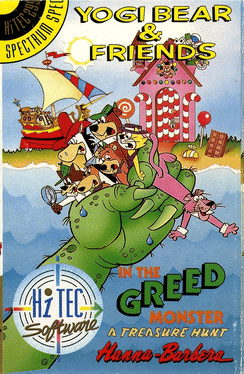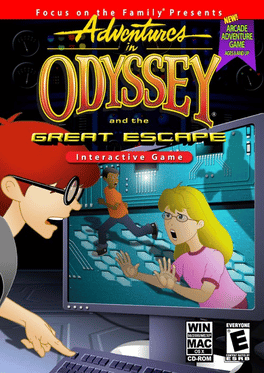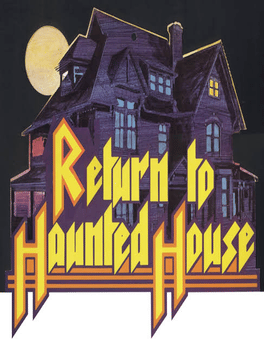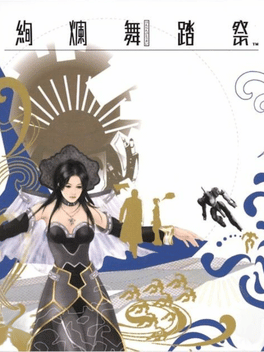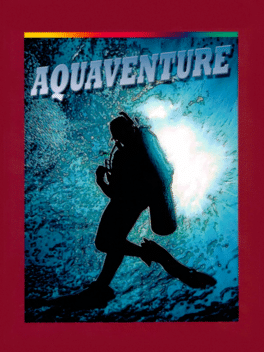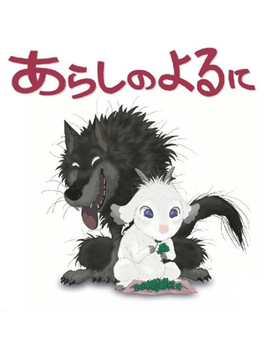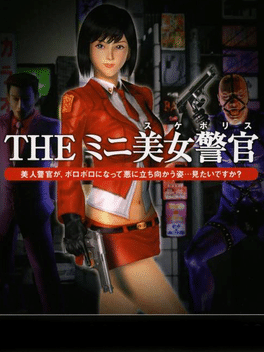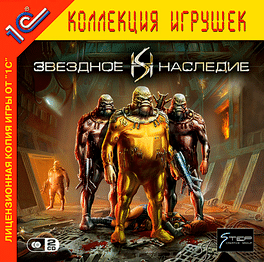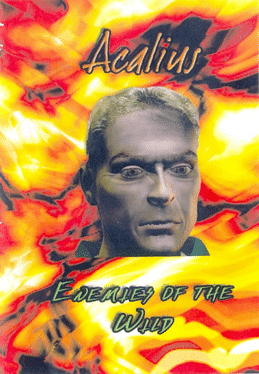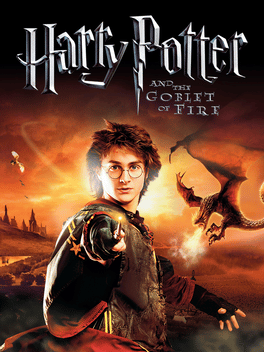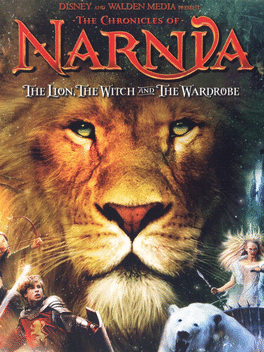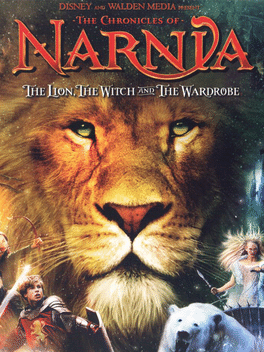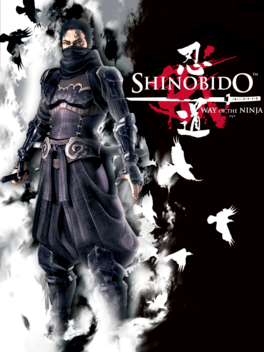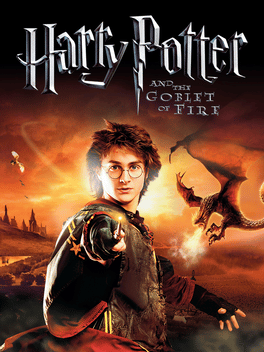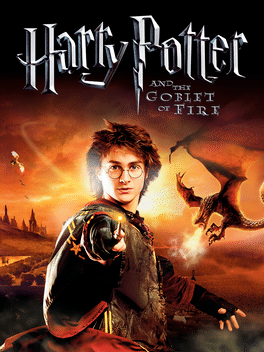New Adventure Games - Page 406
-
Adventures in Odyssey and the Great Escape
2005
Eugene has just invented a life-size virtual reality game and invites Michael and Mandy to be the first to try it out. But when Michael removes the Safety Protocols, the virtual reality game turns into a very real struggle, pitting Michael and Mandy against the Computer's brain—a hyper-intelligent enemy known as Seepi Yu. Is this "GAME OVER?" -
Return to Haunted House
2005
Homebrew sequel to the 2600 classic, that was included later on official Atari compilations such as Atari Flashback 2 and Atari's Greatest Hits. -
Kenran Butou Sai: The Mars Daybreak
2005
An Alfa System and Sony Computer Entertainment PlayStation 2 exclusive adventure game Kenran Butou Sai (絢爛舞踏祭), translates to "The Mars Daybreak", is a real-time simulation adventure game published in Japan by Sony Computer Entertainment for the PlayStation 2 on July 7, 2005. The title is a spiritual successor to Gunparade March containing the same style of hybrid gameplay where the player interacts with AI controlled NPCs and then participates in combat segments with them. Sony's Prokion and Alfa System developed Kenran Butou Sai with the title being a part of the studio's larger interconnected universe known as Unkown World. A television anime based off the world of Kenran Butou Sai, but focusing on a different story and characters, aired a year before the game's launch in 2004 called Mars Daybreak. The show was produced by Bones and was later released in North America by Bandai Entertainment in 2006. -
Aquaventure
2005
Aquaventure
2005
Aquaventure is a bit of a mystery in the prototype world. It was never mentioned in any Atari press releases nor does it show up on any internal part lists. Aquaventure seems to have popped out of the woodwork one day without any public fanfare nor any history behind its mysterious origins. In any case, Aquaventure seems to be complete and ready for release, we can only speculate as to why it was shelved. The game concept is simple; you must dive to the bottom of an undersea cavern and retrieve a fabulous treasure (which just happens to look like a small house of some sort). Along the way you must avoid fish, sea horses, and other underwater creatures attempting to block your path. Your diver came prepared however, for he is armed with a spear gun which he can use to temporarily kill one of the creatures. However, each enemy you kill is soon replaced by a faster and indestructible version of itself, so you need to carefully carve a path to the bottom only destroying the creatures that get in your way. After retrie -
Arashi no Yoru ni
2005
-
Simple 2000 Series Vol. 88: The Mini Suke Porisu
2005
You are Momo Samejima, a special forces agent. Your mission is to assassinate the leader of an organization that's secretly selling a potent new drug, Perorin. You'll make use of guns and grenades as you sneak into a city and face off against enemies in 3D. She tackles thugs with swift kicks in her short, short skirt. She blasts away at goons in her stocking-accessorized, ultra-short china-look dress. -
Simple 2000 Series Vol. 92: The Noroi no Game
2005
The Noroi no Game is an Adventure game, developed by HuneX and published by D3Publisher, which was released in Japan in 2005. -
Acalius: Enemies of the Wild
2005
2051: A Science team has gone to Squal, the biggest planet in the Acalius galaxy, but contact with them is lost. Sgt. Eric Renfield is sent to investigate what happened on the planet. His mission is to track down the team and find out what happened to the scientists, but what Eric does not know is there is something else on the planet, waiting for him. Something... Unknown... A powerful force is at work... a powerful force that cannot be reconciled with. -
Cinnamoroll Fuwa-fuwa Daisakusen
2005
Cinnamoroll FuwaFuwa Daisakusen is a Simulation game, developed and published by Rocket Company, which was released in Japan in 2005. -
Law & Order: Criminal Intent
2005
The world of the hit television show Law & Order: Criminal Intent comes to life on the PC as players take on the role of Detective Robert Goren to investigate four all-new murder cases while taking the on the role of Detective Robert Goren. Actor Vincent D'Onofrio voices the character while you scrutinize the crime scenes, analyze evidence and interview witnesses and suspects. With beautifully rendered graphics and voices just like members of the show's cast, this thrilling 3rd person mystery adventure game will have players feeling like they've stepped into an actual episode of Law & Order: Criminal Intent. -
Aeon Flux
2005
Aeon Flux
2005
star 5.6This is the 2005 release, not to be confused with the other two prior cancelled attempts at an adaptation. In order to coincide with the release of the upcoming film, developer Terminal Reality was tasked with creating a game to tie-in with the film. The team was only given ten months to finish the game, a relatively short time for a non-sequel console game (especially in 2005), as it had to be out in time for the movie's theatrical premier. Still, Terminal Reality rose to the task and managed to create a complete Æon Flux game in less than a year, due in part to the fact that the developer created much of the game using an engine they had already built for their previous title, BloodRayne 2, which cut down on development time dramatically. Nine years after the first ill-fated attempt and five years after the second, an Æon Flux game was finally completed and released to the market in November 2005. -
The Chronicles of Narnia: The Lion, the Witch and the Wardrobe
2005
Players enter the world of Narnia, a land frozen in a 100 year winter by the evil powers of the malevolent and evil White Witch. In order to end this frigid captivity and free his people, the mighty lion Aslan, true ruler of Narnia, invokes an ancient prophecy. It will become the destiny of four young siblings from our world: Peter, Susan, Edmund and Lucy Pevensie to work together and use their unique combat skills, weaponry and abilities to defeat the Witch and her armies to save Narnia. These four unlikely heroes must battle the evil forces of the White Witch by waging war against a vast variety of creatures, including Centaurs, Minotaurs, Minoboars, Cyclops, Werewolves, Wraiths, Ankleslicers, Wolves, Satyrs, Boggles and more. -
The Chronicles of Narnia: The Lion, the Witch and the Wardrobe
2005
Players enter the world of Narnia, a land frozen in a 100 year winter by the evil powers of the malevolent and evil White Witch. In order to end this frigid captivity and free his people, the mighty lion Aslan, true ruler of Narnia, invokes an ancient prophecy. It will become the destiny of four young siblings from our world: Peter, Susan, Edmund and Lucy Pevensie to work together and use their unique combat skills, weaponry and abilities to defeat the Witch and her armies to save Narnia. These four unlikely heroes must battle the evil forces of the White Witch by waging war against a vast variety of creatures, including Centaurs, Minotaurs, Minoboars, Cyclops, Werewolves, Wraiths, Ankleslicers, Wolves, Satyrs, Boggles and more. -
The Chronicles of Narnia: The Lion, the Witch and the Wardrobe
2005
star 6Based on the Walt Disney Pictures and Walden Media film capturing the renown and beloved book series from author C.S. Lewis. Players enter the world of Narnia, a land frozen in a 100 year winter by the evil powers of the malevolent and evil White Witch. In order to end this frigid captivity and free his people, the mighty lion Aslan, true ruler of Narnia, invokes an ancient prophecy. It will become the destiny of four young siblings from our world: Peter, Susan, Edmund and Lucy Pevensie to work together and use their unique combat skills, weaponry and abilities to defeat the Witch and her armies to save Narnia. These four unlikely heroes must battle the evil forces of the White Witch by waging war against a vast variety of creatures, including Centaurs, Minotaurs, Minoboars, Cyclops, Werewolves, Wraiths, Ankleslicers, Wolves, Satyrs, Boggles and more. -
Shinobido: Way of the Ninja
2005
star 7DEEP IN THE SHADOWS A NlNJA WAlTS TO STRIKE It is the 16th century. The once peaceful province of Utakata now lies in a state of despair. The elite ninja clan who once protected the region are all but dead and with no safeguard, Utakata‘s enemies are starting to stir. War is surely near. As the last of the Asuka Ninja you must rise up and choose a new path. Exact revenge on those who sought to end your clan and decide upon a new fate for the land. -Use Stealth or aggression to defeat your enemies -Combine your equipment to form over 150 weapons and items -Create maps and missions and transfer them to Shinobido: Tales of the Ninja on your PSP (PlayStation Portable) (sold separately) -
Harry Potter and the Goblet of Fire
2005
star 6.9Harry Potter and the Goblet of Fire for the Nintendo DS and Game Boy Advance is a top-down action/adventure game where you play as the three friends and progress through the story based on the book and film. Make your way through various scenarios by attacking enemies and solving puzzles using spells. One button fires a ranged spell, such as Confoundus, while another is used for stream spells, like Wingardium Leviosa, which can be moved around with the Control Pad. You can also call your friends for added power to your magical spells. The DS version includes a small bonus game where you take care of a magical creature called a 'Niffler'. It is a simulation game, like a very simple Tamagotchi. You can feed the Niffler, clean it, and give it toys. Depending on what you do, it will become more or less pleased with you. Perform well enough, and it will become really happy, and let you pat it to make it even happier.
